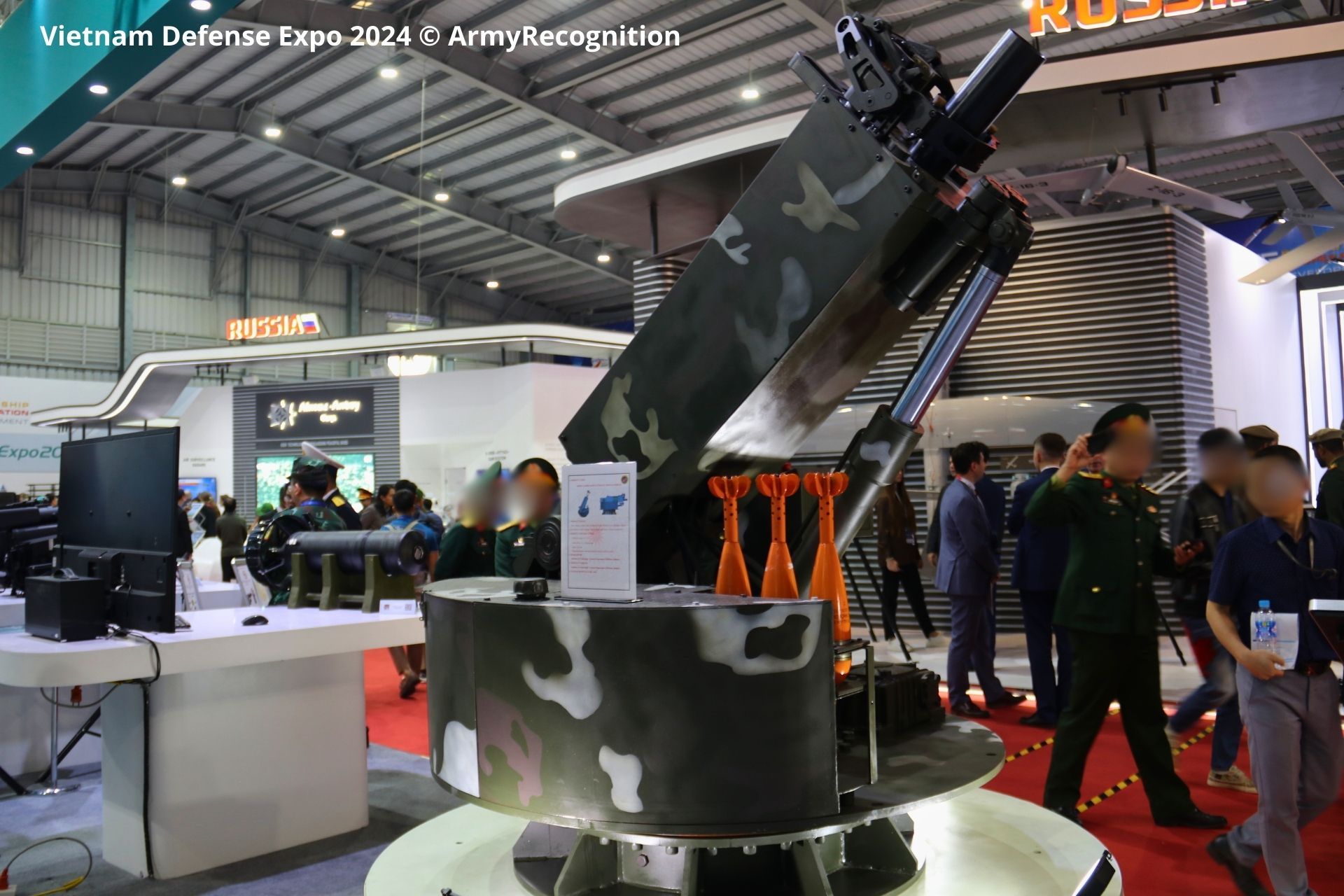Breaking News
Vietnam Army Unveils its 100 mm Mortar Combining Mobility and Tactical Efficiency.
The Vietnam Army unveils its brand-new 100 mm semi-automatic mortar at the Vietnam Defence Expo 2024, held in Hanoi. This system, designed for vehicle mounting, highlights the country's technological advancements in the defense industry. The weapon stands out for its operational capabilities, modern integrated systems, and entirely local production, demonstrating Vietnam's ambitions to enhance its strategic autonomy and industrial capacity.

The 100 mm semi-automatic mortar offers a range of 6 to 10 kilometers and a firing rate of 6 to 10 rounds per minute, ensuring effectiveness in intensive operations (Picture source: Army Recognition)
The 100 mm semi-automatic mortar module has an operational range of 6 to 10 kilometers, providing effective battlefield coverage. Its firing rate varies between 6 and 10 rounds per minute, making it suitable for intensive operations. Weighing approximately 1.5 tons, the system is designed for rapid and easy deployment via vehicle mounting. It features a semi-automatic control system, ensuring optimized operation and improved accuracy under various operational conditions.
The development and production of this mortar were carried out by the Institute of Technology under the General Department of National Defense Industry. This institution has played a significant role in modernizing the country's defense capabilities, leveraging its engineering expertise to produce a system meeting modern standards. The year 2024 marks the official start of production for this system, reflecting Vietnam’s active role in the design and manufacture of defense equipment.
The 100 mm semi-automatic mortar differs from competitors like Thales’ 2R2M, Poland’s Rak, and Finland’s Nemo, primarily in its smaller caliber. While these systems employ 120 mm calibers, offering greater range and impact, the Vietnamese mortar emphasizes lighter design and improved maneuverability. For instance, the Rak and Nemo, equipped with fully automatic loading systems, achieve higher firing rates and advanced features like MRSI (Multiple Rounds Simultaneous Impact). In contrast, the Vietnamese system, with its lighter 1.5-ton weight, is particularly suited to light vehicles, facilitating faster deployment in varied operational environments.
Compared to heavier systems like Sweden’s Mjölner or Russia’s 2S9 Nona-S, which are mounted on tracked armored chassis and designed for multifunctional roles, the Vietnamese mortar is focused on specific tactical missions. Although its firing rate is competitive for a 100 mm caliber, it remains below the capabilities of 120 mm automatic mortars, which often incorporate more advanced technologies for battlefield efficiency. However, the Vietnamese mortar compensates for its relatively lower firepower with ease of use and potentially lower costs, making it an attractive solution for armed forces seeking economic and mobile options.
By introducing this 100 mm semi-automatic mortar, Vietnam underscores its efforts to strengthen its defense capabilities while positioning itself as a potential player in the international arms market. This system may attract interest from other countries aiming to modernize their arsenals with effective and cost-efficient solutions. The proliferation of this technology could diversify the options available on the global market while highlighting the growing capabilities of Vietnam's defense industry.


























